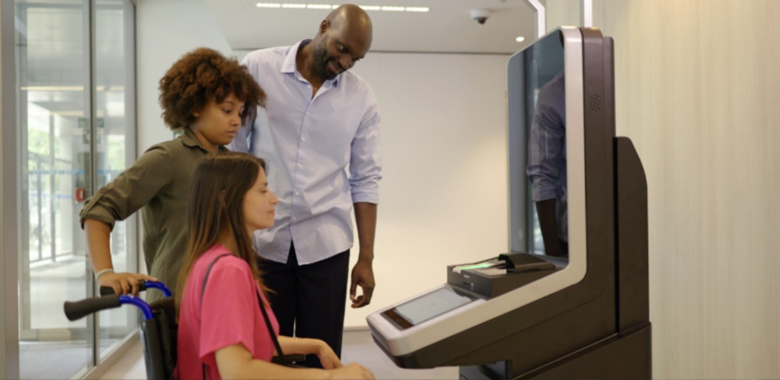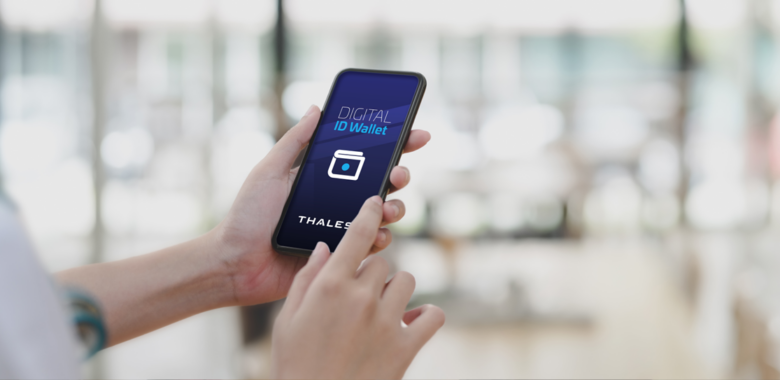It’s easy to forget how far technology has come in such a short space of time. Sometimes it’s only when we take a step back and reflect do we notice just how much things have advanced.
It’s at this time of year that experts from across the industry make forward-thinking predictions for the year(s) ahead. While we’re no different here at Thales, we thought it would be interesting to look back at predictions made in years gone by on where we’d be by 2025.
So where have we ended up? Were they bang on, or did they miss the mark?
Prediction One: AI Reigns Supreme
PREDICTION: In 2015, futurist and technologist Peter Diamandis, predicted that next-generation AI systems will be comparable to J.A.R.V.I.S. from Iron Man by 2025. AI personal assistants would have extended capabilities; they would listen to all of your conversations, read your emails, and scan your biometric data, delivering ultimate user convenience. Jeff Bezos also predicted in 2000 that with the advancement of said technologies, computers would be able to undertake incredibly complex tasks, emulating the abilities of humans. In fact, he speculated that we’d speak to people on the phone not knowing if they are human or a computer.
REALITY: Although AI has been around for decades, the technology did indeed see a boom in late 2022 when ChatGPT brought generative AI capabilities to the masses, creating countless content creation opportunities for everyday users.
AI is certainly proving to up the game on the personal assistant front, too, with the likes of Apple Intelligence delivering more natural, contextually relevant, and personal engagements with Siri than ever before. But it’s also true that AI-fueled technologies are becoming increasingly difficult to spot – both in good and bad contexts. High performing chatbots, for example, can now accurately emulate human support in customer service scenarios, while the prevalence of deepfakes compromises consumer confidence in their digital experience.
While AI has partly contributed to more sophisticated, frequent, and damaging cyberthreats, Thales has also optimised AI in its security solutions, helping to more effectively detect and anticipate attacks.
Prediction Two: The Internet of Everything
PREDICTION: Back in 2000 at the turn of the millennium, Jeff Bezos predicted that ‘in the coming years’ cell phones would become a part of everyday objects, with computer chips making their way into everything from plates to clothing. In 2015, Peter Diamandis again anticipated that the ‘Internet of Everything’ – as an evolution of Internet of Things – would connect devices, people, processes, and data, with 100 billion connected devices in use by 2025, each with a dozen or more sensors. This would create a ‘trillion-sensor economy’.
REALITY: While ‘smart’ plates and clothing didn’t quite take off as predicted, we do encounter embedded sensors in everyday objects on a daily basis – whether it’s smart meters, smart speakers, or entire cities.
IoT now transcends into practically every industry, delivering greater efficiencies, predictive capabilities, and intelligent insights. While Diamandis was spot on with IoT’s upward trajectory, by the end of 2024 there are projected to be more than 207 billion devices, more than doubling his estimations. This is only set skyrocket further as Massive IoT makes more of a mark across use cases like automation, agriculture, and smart meters in 2025 and beyond. Thales plays a critical role in this growth journey, aiming to drive the digital transformation of businesses with secure, robust, scalable IoT solutions. This involves developing best practice, future proof hardware, providing connectivity management solutions, and safeguarding IoT devices and their vulnerabilities from bad actors.
Prediction Three: Autonomous vehicles are rife
PREDICTION: Technology watchers in 2000 predicted that hundreds of thousands of autonomous vehicles (AVs) would be in the streets by the 2020s. As a foundational element of smart cities, this new era of transport would minimise the risk of accidents and fatalities, while enhancing efficiency, convenience, and user comfort.
REALITY: While these technologies remain a huge area of investment for car manufacturers, AVs are still very much in trial phases across test sites globally.
With the stakes so high, today’s AVs cannot yet guarantee the required levels of public safety and security. Thankfully, Thales is making headway in addressing these roadblocks with a suite of solutions that tackle the cybersecurity vulnerabilities faced by AVs. They will not only enhance vehicle functionality but will provide robust measures to protect AV software from bad actors, mitigating malfunctions and remote hacking incidents. Needless to say, AVs are well on their way to being a reality on our roads, but not quite in time for 2025.
Prediction Four: A reimagined electronic voting system
PREDICTION: By 2020, many experts predicted not only widespread electronic voting, but also online voting from home. In fact, a 1997 Wired article predicted that the majority of Americans would be voting online by as early as 2008.
REALITY: In the UK, and indeed globally, this certainly isn’t the case – even five years on from 2020. In fact, it was only this year that Brits were mandated to bring physical ID to polling stations to prove their identity. The voting process is antiquated in comparison to other industries, perhaps due to a culture of mistrust and a fear of electoral interference from malicious actors and even nation states.
That being said, the evolution of digital identities has made leaps and bounds in recent years, representing a viable digital alternative to complement traditional physical IDs. Thales’ Digital ID Wallet, for example, could address this gap in the market. In theory, once activated via a form of biometric authentication, the user could verify their identity and eligibility to vote in a secure, seamless, and efficient way. Although Thales’ offering acts as an enabler of electronic and remote voting, this all-in-one identity gateway could also be applied to a variety of identity-related services – from opening a bank account, to proving your qualifications when applying to a job, to buying a bottle of wine at a supermarket.
Prediction Five: Biometrics transform modern policing
PREDICTION: Police forces will turn to facial recognition software, DNA databases, and drones to solve crimes.
REALITY: There’s no doubt about it – these technologies are not only a reality but are actively transforming how police forces operate today.
Thales’ on the go biometric identification technologies empower officers to quickly process fingerprints and identify suspects in dynamic environments. These technologies mean the police can analyse fingerprints and perform facial recognition wherever and whenever via a standard police smartphone – without having to return to the station. And with a remote police national database at their fingertips, users are able to securely access a wealth of information regarding suspects’ identity, any crimes committed, and court history.
Specialist drones are also deployed to enhance public safety; they aid in disaster response and surveillance by monitoring for hazards and threats, managing crowd density, and assisting with emergency response efforts.
How did the predictions shape up?
The outcome of these predictions is certainly a mixed bunch – some outperformed the expectations of experts, while others were future gazing just a little too far.
Either way, it’s clear Thales is playing an integral role in moving the needle for each of these technologies, and we look forward to what 2025 has in store.



